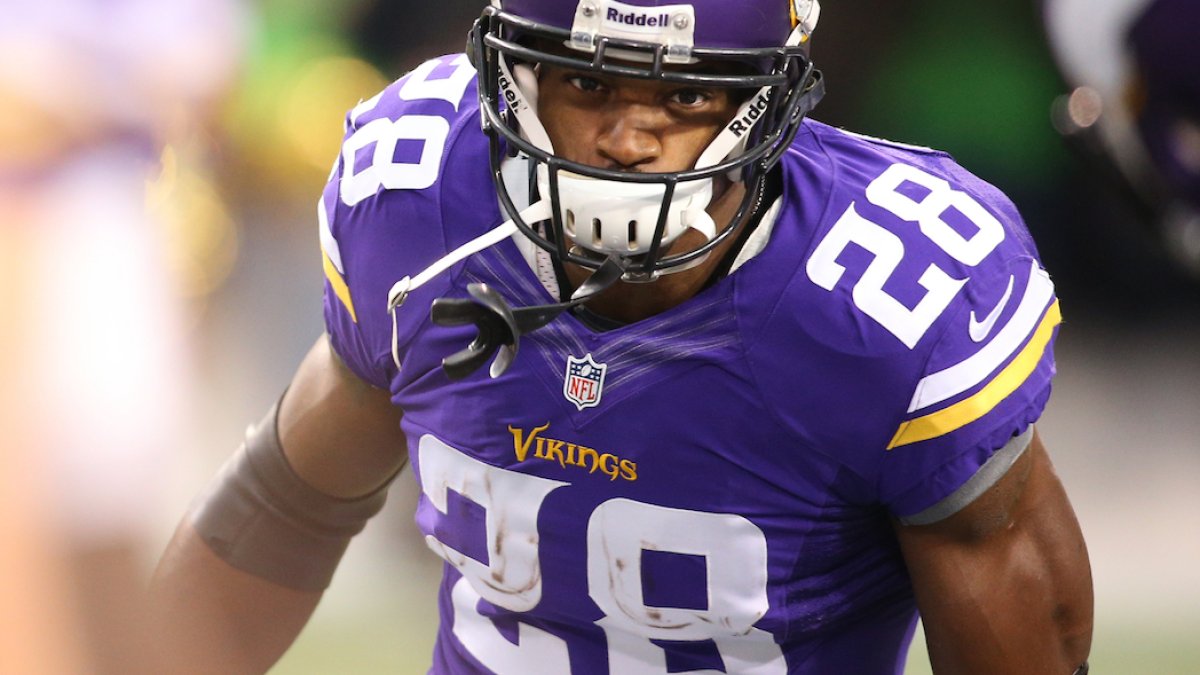The Minnesota Vikings elected not to pick up Adrian Peterson’s contract option — that would have paid a soon-to-be 32-year-old running back $18 million in 2017 — meaning he now hits the free agency pool for the first time in his NFL career.
Peterson can still be a dangerous runner with the ball in his hands, but he has become less suited to the current NFL game the longer his career has lasted. The league has become ever more pass-oriented, and Peterson is a complete non-factor in the passing game.
For his entire career, Peterson has fewer than 2,000 receiving yards, including the playoffs. David Johnson will eclipse that midway through his third season and Le’Veon Bell already has despite missing time in each of the past two seasons. Peterson has five career receiving touchdowns compared to 102 on the ground.
His lack of receiving chops would be an issue on its own, but the bigger problem is that he has never been a capable pass protector, which is far less forgivable for a player of his physical gifts. Only once in his career has he earned a good PFF grade for pass protection, and that was back in 2009. He has averaged around nine total pressures surrendered per season, a figure that 54 running backs bettered in 2016 alone.
Peterson is no factor as a receiver and can’t be trusted to pass block for his QB, and so the Vikings over the past few seasons have often kept him off the field in the most crucial game situations. On third downs, or hurry-up offense, or late in the game, they have pulled Peterson from the field lest they get trapped in passing situations without being able to substitute him off the field.
Peterson has become a two-down running back in a league where those two downs are becoming more like one down.
His work with the ball in his hands has been incredible, but at 31 years old, just a month from his 32nd birthday, there are signs that even those powers are waning.
He averaged a very healthy 3.2 yards per carry after contact over the first seven seasons of his NFL career, a figure that would have been tied for third in 2016 among backs with 100-plus carries to their name. Peterson averaged at least three yards per carry after contact for seven straight seasons to begin his career, but he hasn’t been anywhere near that mark for the past three years. Two of those seasons have been barely there due to suspension and injuries (itself a problem at his advanced age), but the one that wasn’t saw his average after contact plummet to 2.3 yards even if his net yardage figures stayed high.
Peterson now needs to be part of a backfield committee, where he can be the running back while somebody else plays on passing downs. If he can stay healthy – far from a given – he can still have a significant positive impact on a new team, but that role clearly wasn’t worth the $18 million he was scheduled to pick up from the Vikings, and it may prove to have a much lower value than Peterson himself will be looking for.
Peterson’s contract situation will be one of the most interesting free agent storylines, but if he can be picked up for the right contract, he could have an immediate transformative effect on an offense.



 © 2025 PFF - all rights reserved.
© 2025 PFF - all rights reserved.